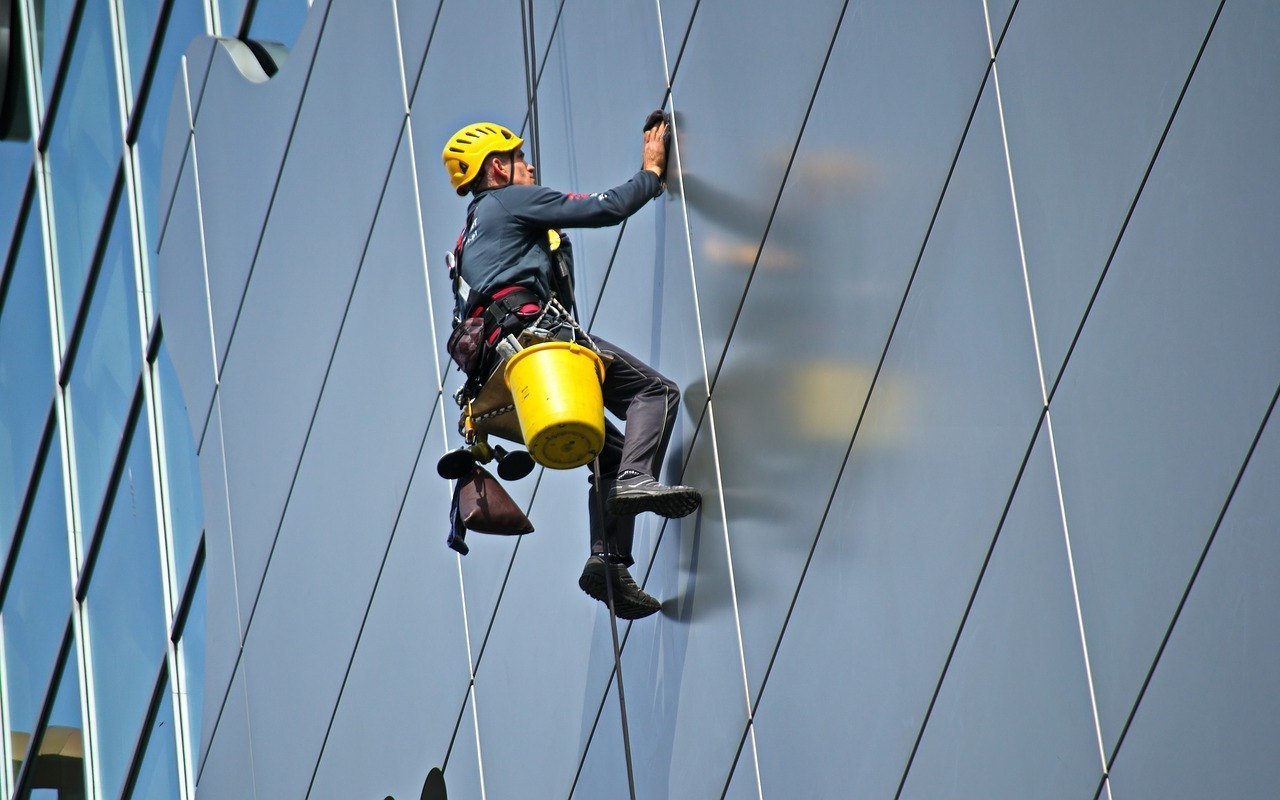
Facade cleaning refers to the external surface cleaning of a building — including glass, ACP (aluminum composite panel), stone, or concrete — to remove dirt, grime, algae, stains, bird droppings, pollution residues, and mineral deposits. It helps maintain the building’s appearance, prevents surface damage, and enhances its value.